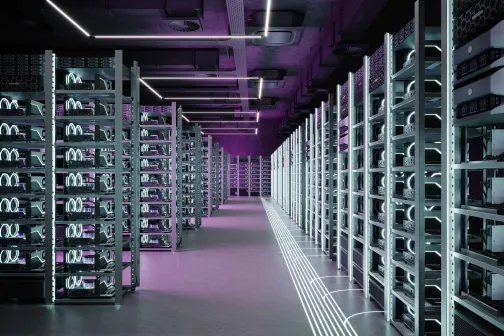The future of data centres and what it means for construction insurance
Published
Read time
With the growth of the digital economy and widespread use of AI, the demand for data centres is at an all time high, and is expected to continue for years to come. With this in mind, we explore some key trends, and what they mean for the construction insurance industry.
1. | Investment in Data Centres |
Annual global data centre investment is expected to surpass $1 trillion within the coming years, driven by AI, cloud computing, and digital transformation1. Investors are pouring capital into new developments to meet growing demand, making data centres one of the fastest-growing asset classes in real estate. | |
2. | Growth in Hyperscale Data Centres |
The number of hyperscale data centres (large-scale cloud facilities) surpassed 1,000 in 2024. This is forecasted to double every four years2. | |
3. | Construction and Infrastructure Requirements |
The average cost to build a hyperscale data centre can be between $500 million and $1 billion. However, some top-tier facilities can exceed $2 billion3. | |
4. | Rising Energy Consumption |
Data centres currently consume 2% of global electricity4, but AI-driven demand could significantly increase this consumption up to 9% by 20305. | |
5. | Sustainability and Green Data Centres |
There is a significant shift to ensuring that data centres are powered by renewable energy or carbon-neutral solutions. | |
6. | Water Consumption and Cooling Innovations |
A single mid-sized data centre consumes around 300,000 gallons of water daily, equivalent to the daily usage of approximately 1,000 U.S. homes6. This is pushing demand for water-efficient cooling technologies. | |
7. | AI and High-Density Data Centres |
Experts believe that AI-driven workloads require 60kW or more per rack, compared to traditional cloud workloads7. | |
8. | Geographic Expansion of Data Centres |
The fastest-growing data centre markets include Virginia (US), Frankfurt (Germany), Mumbai (India), and Tel Aviv (Israel) due to increasing cloud and AI adoption. New data centres are emerging in non-traditional markets, requiring investment in land, infrastructure, and energy supply. |
What does this mean for construction insurance?
Considering the above, data centres can present significant opportunities to the construction insurance market. However, they also present unique risks, and the appetite for such projects is sometimes variable as a result.
From the design and construction of the building itself to the extensive installation, testing and commission of the high value data processing equipment, the risk profile can shift significantly throughout the development period. It is essential that the insurance programme covering this period is designed to be robust enough to cater for the varying risks and contracting parties involved. Understanding of the project risks and proper communication of the management and mitigation of such risks is a key issue when considering an insurance market approach.

Discover our latest report
In our latest report, we explore the current situation in the construction and infrastructure industry in Israel and what the future holds.
We are mindful of the ongoing conflict and geopolitical uncertainty in the region and this report has been produced with this context in mind.
Our aim is to provide a comprehensive and balanced overview of the construction landscape in Israel, and what the future looks like.
All data presented in this brochure has been checked and verified with external sources to ensure accuracy and reliability. All sources used in this report are available upon request.
We hope this brochure serves as a valuable resource, while acknowledging the complexities of the current political situation.
Contact our experts
Our team have leading experience with these projects and are on hand to support you.

James Crow

Lizzie Conolly

Jessica Lee
